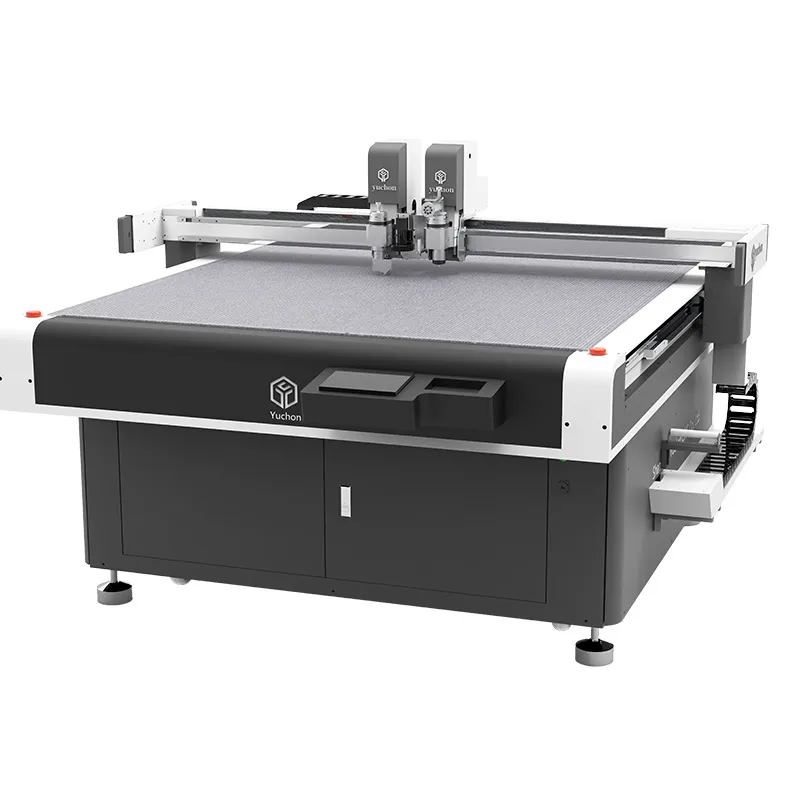Flat cutting machines play a crucial role in shoe production by cutting various materials such as leather, fabric, or synthetic materials into precise shapes and patterns for shoe components.
These machines integrate with other manufacturing processes in shoe production in the following ways:
- Design and Development: Before production begins, designers use CAD (Computer-Aided Design) software to create shoe patterns and designs. Flat cutting machines are then programmed to cut these patterns accurately, ensuring that the shoe components match the intended design specifications.
- Material Handling: Flat cutting machines are often integrated with material handling systems such as conveyors or robotic arms to automate the feeding and positioning of materials for cutting. This integration streamlines the workflow, minimizes manual handling, and improves overall efficiency in material preparation.
- Marking and Nesting: Flat cutting machines can optimize material utilization by automatically nesting pattern pieces closely together to minimize waste. Some machines also have marking capabilities, allowing them to add registration marks or identification labels to the cut pieces for assembly and quality control purposes.
- Precision Cutting: Flat cutting machines use various cutting technologies such as oscillating knives, rotary blades, laser cutting, or waterjet cutting to achieve precise and clean cuts on different types of materials. This precision ensures consistency in shape and size across multiple shoe components, flat cutting machine contributing to the overall quality of the finished product.
- Integration with Stitching and Assembly: After cutting, the shoe components are often stitched or assembled together to form the final shoe. Flat cutting machines can be integrated with stitching machines, adhesive application systems, or assembly lines to streamline the production process and ensure seamless transition between cutting and assembly stages.
- Customization and Personalization: Flat cutting machines enable manufacturers to offer customized or personalized shoe designs by easily adapting cutting patterns to meet individual customer preferences. This flexibility in production allows for rapid prototyping, small-batch manufacturing, and mass customization to cater to diverse market demands.
- Quality Control: Flat cutting machines contribute to quality control by producing accurately cut components that meet specified tolerances and standards. Automated inspection systems can be integrated with the cutting process to detect defects, inconsistencies, or deviations from design specifications, ensuring that only high-quality components are used in shoe production.
- Data Integration and Analysis: Flat cutting machines generate data on cutting parameters, material usage, and production output, which can be integrated into manufacturing execution systems (MES) or enterprise resource planning (ERP) systems for real-time monitoring and analysis. This data-driven approach enables manufacturers to optimize production processes, identify opportunities for improvement, and make informed decisions to enhance overall efficiency and productivity.
In summary, flat cutting machines are integral to shoe production by providing precision cutting, material optimization, customization capabilities, seamless integration with other manufacturing processes, and data-driven insights to improve efficiency and quality throughout the production cycle. Their versatility and automation capabilities make them indispensable tools in modern shoe manufacturing operations.
